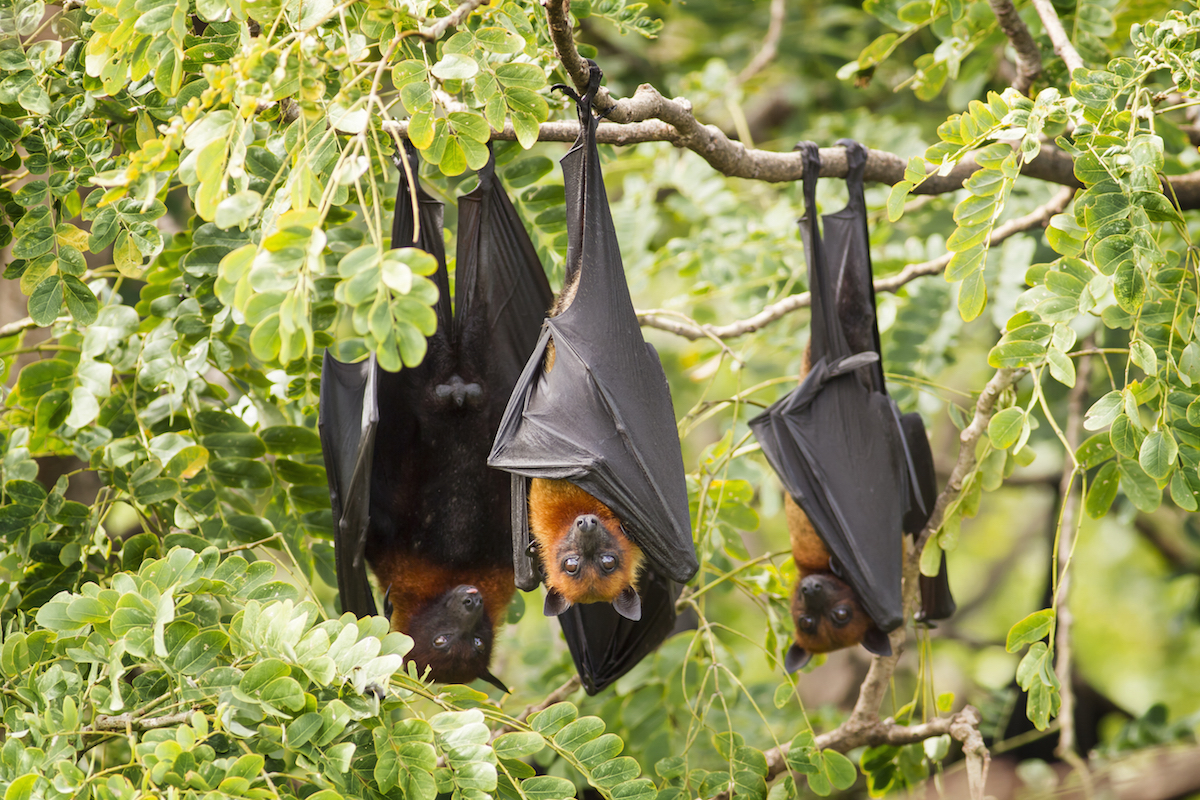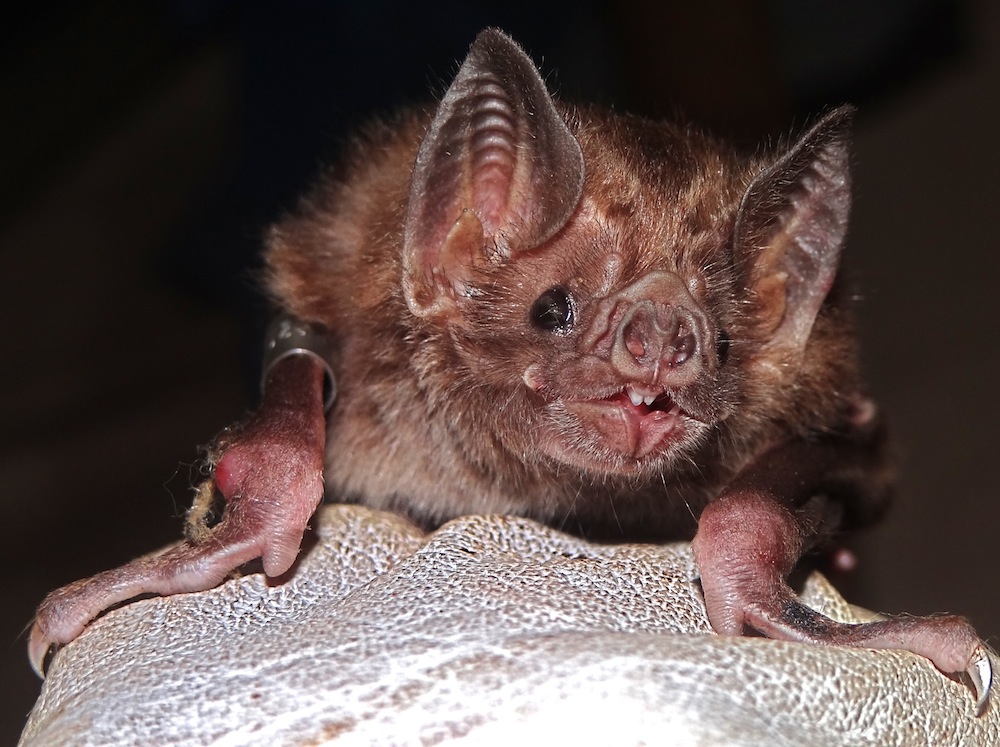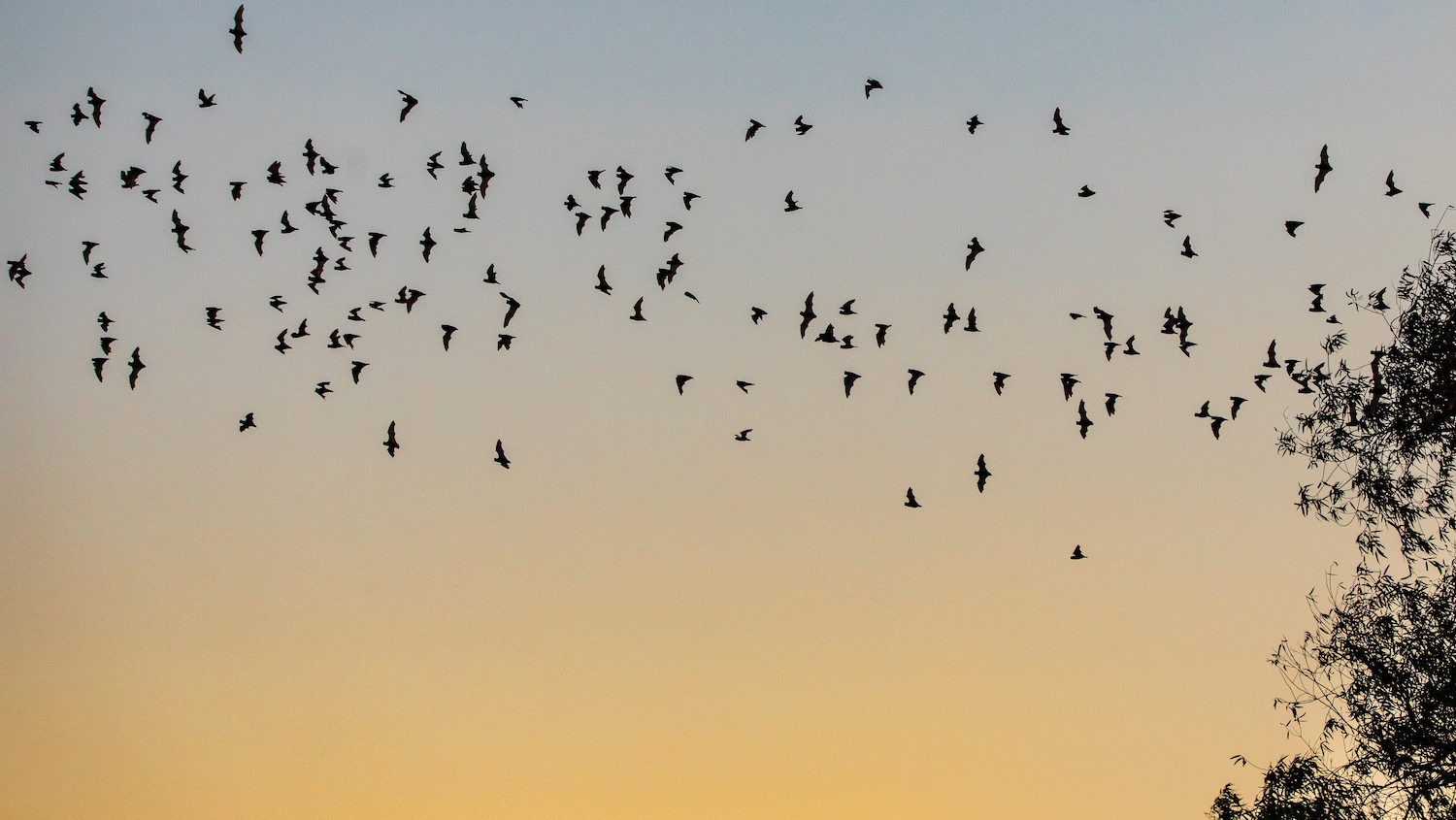Bats: Fuzzy Flying Mammals

As the only mammal that can fly, there's no doubt that bats are exceptional creatures. Common misconceptions and fears about bats have led many people to regard these nocturnal flyers as nothing more than frightening disease carriers, but bats are crucial for a healthy environment. Bats disperse seeds, eat loads of harmful insects and help pollinate plants.
There are more than 1,300 bat species distributed across six continents; about 50 bat species live in national parks across the United States, and Indonesia hosts 219 bat species — more than any other country. Bats make up one-fifth of the mammal population on Earth, according to Bat Conservation International.
Megabats and microbats
Bats are divided into two main types: megabats and microbats. Megabats (formally, bats in the Megachiroptera suborder) include flying foxes and Old-World fruit bats. They tend to be larger than microbats (Microchiroptera suborder), although some microbats are actually larger than the smaller megabats.
Flying foxes (genus Pteropus) are the largest bats. Some species have wingspans of 5 to 6 feet (1.5 to 1.8 m) and weigh up to 2.2 lbs. (998 grams), according to the Oakland Zoo. One of the smallest megabats is the adorable long-tongued fruit bat (Macroglossus minimus), which has a wingspan of only 10 inches (25.4 centimeters) and weighs about half an ounce (14 g), according to the Smithsonian Institution.
Among microbats, the largest species is actually pretty big: the false vampire, or spectral bat (Vampyrum spectrum), weighs 5 to 6.7 ounces (145 to 190 g) and has a wingspan of up to 40 inches (1 m). The smallest bat of them all is the bumblebee bat (Craseonycteridae thonglongyai), according to the University of Michigan Museum of Zoology. This tiny furrball-with-wings grows to only about 1.25 inches long (3 cm) and weighs about 2 grams (0.07 ounces).
Habitat
Bats live almost everywhere, except for some islands, and the Arctic and Antarctica. They prefer warmer areas that are closer to the equator, and they can be found in rain forests, mountains, farmland, woods and cities.
These furry mammals don't have a lot of fat to keep them warm, and instead have two strategies for weathering the cold. Some bats migrate to warmer areas, while others go into a short-term form of hibernation called torpor. During torpor, a bat reduces its metabolic rate, lowers its body temperature, and slows its breathing and heart rates.
Get the world’s most fascinating discoveries delivered straight to your inbox.
Bats roost in trees, caves, mines and barns — any place that provides shelter from the weather, protection from predators and seclusion for rearing their young. They generally live together in groups called colonies, which can contain anywhere from 100 to several thousand individuals.
As nocturnal creatures, bats sleep during the day and are active at night. Some may fly up to 31 miles (50 kilometers) to find food during their nightly journeys. In the day, they sleep upside down, holding on to their roost with their sharp claws. [Flying Mammals: Gallery of Spooky Bats]
Diet
Most bats eat flowers, small insects, fruits, nectar, pollen and leaves, though it depends on the type of bat. Megabats usually eat fruits, and microbats generally eat insects.
Some bats have relatively large appetites, such as the Malayan flying fox, which eats about half its body weight every day. But the vampire bat far exceeds even that, eating twice its weight in one day. Bats can eat fast, too — the brown bat can eat up to 1,000 small insects in just one hour, according to the Defenders of Wildlife organization.
Bats use echolocation to "see" insects and other objects in the dark. They make high-frequency sounds then analyze the location of objects around them by perceiving how the sound bounces off the object. Echolocation allows the bats to tell how big and how far away an object is.
Not all bats eat insects. For example, some bats will squeeze fruits into their mouths and drink the juices. Vampire bats, though, like a different kind of juice. As their name suggests, they drink blood, mainly from cattle and deer, which they find using specialized heat-detecting sensors near their noses. And they don't actually suck the blood like the legends suggest. Rather, they make a V-shaped cut and then lick up the blood, according to the San Diego Zoo.
An anticoagulant in vampire bat saliva, called Draculin, is so effective at thinning blood that it's being considered for use in patients with stroke or heart disease, Discover magazine reported.
Related: Are bats really blind?
Mating habits
Bats exhibit unique mating behaviors not seen in other animals. Male and female bats meet at hibernation sites, called hibernacula, where they breed.
"Bats 'swarm' around in huge numbers, chasing each other and performing spectacular aerobatics," biologist John Altringham told Live Science in 2013. [Animal Sex: How Bats Do It]
It's not clear how the bats choose their mates, Altringham said, but it may be that females seek out the most agile males. During the swarming event, breeding pairs will go off to secluded spots in the cave to mate in private.
Researchers have found that female short-nosed fruit bats perform oral sex on their mates to prolong the act; male Indian flying foxes do the same thing to females.
Mating occurs in the late summer and early autumn, and the females store the males' sperm until the next spring. A pregnant female will carry her young for a gestation period of 40 days to six months. Then, she will give birth to one baby, called a pup. The pup will weigh about one-fourth as much as its mother at birth. Young bats drink milk from their mothers to survive, like other mammals.
The mothers and pups stay in groups separate from the males. Mothers will help take care of other pups until the pups are old enough to care for themselves.
Conservation status
Many bat species around the world are threatened with extinction. The Red List from the International Union for Conservation of Nature identifies more than 280 species as endangered, vulnerable or "near threatened."
Bulmer's fruit bat is the world's most endangered bat. It's only found in one cave in Papua New Guinea. According to the Red List, there are only around 137 to 160 individuals left.
A fungus that causes a disease called white-nose syndrome has devastated bats in North America. This white, powdery-looking fungus, a member of a group of cold-loving fungi called Geomyces, coats the muzzles, ears and wings of bats and has caused the death of hundreds of thousands of the animals in the northeastern United States. [Devastating Disease Found in Endangered Gray Bats]
While the effects of white-nose syndrome have decimated bat populations, anti-fungal microbes found in soil could provide a ray of hope for North America's beleaguered bats, researchers recently reported.
Disease vectors
Bats are recognized by many as flying disease carriers and there's good reason for that. In 2013, Live Science reported that bats act as reservoirs for more than 60 different viruses that can infect humans. And in 2017, a study published in the journal Nature found that bats carry significantly more viruses than any other mammal species on planet.
"There seems to be something different about bats in terms of being able to host zoonotic infections," David Hayman, a wildlife epidemiologist at Colorado State University, previously told Live Science.
Researchers aren't exactly sure why bats are so good at harboring disease, but there's strong evidence to suggest it’s due to the fact that bats are relatively long-lived creatures, and they live in such tight quarters with one another. Their habitats and food sources also tend to overlap with humans, making contact more likely.
But getting rid of bats is not the way to avoid disease. In fact, research has shown that killing bats doesn't reduce disease transmission but instead can increase the number of susceptible bats and enhance disease transmission.
A bit of bat trivia
Bat flight is so acrobatic and complex that it inspires designs for flying robots; a robotics engineer told Live Science in 2017 that bat flight was "the Holy Grail of aerial robotics."
Nitrogen-rich bat poop is a nourishing treat for carnivorous pitcher plants in Borneo. The plants provide bats with a parasite-free roost, and the bats reciprocate by using pitcher plants as living toilets.
Bats may be the only mammals that can fly — but did you know that they can also run and swim? Vampire bats sprint over the ground by loping on all fours, adding a little extra hop that takes them airborne for a few moments. Bats can also paddle through water by using their wings, hands and feet, Smithsonian reported.
This article was updated on Oct. 24, 2018 by Live Science Senior Writer, Mindy Weisberger and Reference Editor, Kimberly Hickok.




